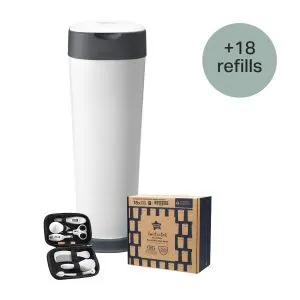
Ultimate XL Nappy Disposal Bundle with 18 Refills
Bundle & Save 40%
Subscription orders can be cancelled at anytime. Free delivery on all subsequent subscription orders. Find out more about subscriptions.
They’re easy and fuss free
Your products are automatically sent to you
You save up to 10% when you sign up for a subscription
You can cancel at any time

Feeding little and often takes up a lot of your time when you have a newborn. If you're using bottles to feed your baby expressed breast milk or formula, the choices and finding the best baby bottles for newborns can sometimes be confusing.
While there’s no evidence that a certain type of teat or bottle is better than any other, we’ve written this post to simplify things a little, and help you find the right type of bottle that works well for both you and your baby.
No two babies are the same, and neither are our self-sterilising bottles. They can both be used to feed expressed breast milk or formula, and are designed to provide anti-colic protection, but there are some key differences that set them apart.
Our Natural Start® bottles support your nurturing instincts when introducing your baby to bottle feeding. They come in a range of materials, including soft, squishy silicone and glass.
If a baby needs extra anti-colic support, our Advanced Anti-Colic™ bottles are specially designed to ease the discomfort of colic, gas and reflux.
Explore the Range
Explore the Range
If you're exclusively bottle feeding a newborn, you will need 4 to 6 bottles to get started.
When preparing for a newborn, it's helpful to understand what bottle sizes are most appropriate.
Small baby bottles (4-5 oz/120-150 ml+) are ideal for newborns. In the early weeks, newborns have small stomachs and eat small amounts frequently. These smaller bottles are perfectly suited for those initial feeds. They help prevent waste, as you're not preparing large amounts of formula or breast milk that might go unused.
As your baby grows, the amount they need per feed will increase, and when that happens, you’ll need bigger bottles (8-11 oz/260-340 ml+). Here are some important points to keep in mind when shopping for baby bottles.
By having a mixed collection of smaller and larger bottles, and teats in various flow rates, you'll be prepared to address your baby’s changing bottle feeding needs as they grow.
Explore the Range